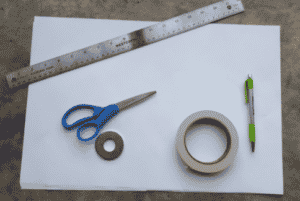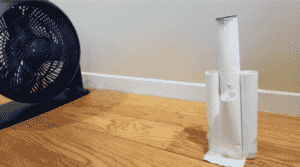Lateral force: A force in a horizontal direction that pushes against a wall or building. Wind is an example of a lateral force.
Wind load: The force of wind as it pushes and pulls on a building.
Wind tunnel testing: A means of testing how a building, car, or aircraft will do when a certain amount of wind is generated. It enables engineers to study how the wind moves around the object they are testing.



 Place the fan on the floor off to the side and turn it on so participants can test their creations as they are ready. Depending on the fan, decide which speed is strong enough to affect towers that get close, but not so strong that most of the towers blow away from a farther distance.
Place the fan on the floor off to the side and turn it on so participants can test their creations as they are ready. Depending on the fan, decide which speed is strong enough to affect towers that get close, but not so strong that most of the towers blow away from a farther distance.


3 Comments
Thank you